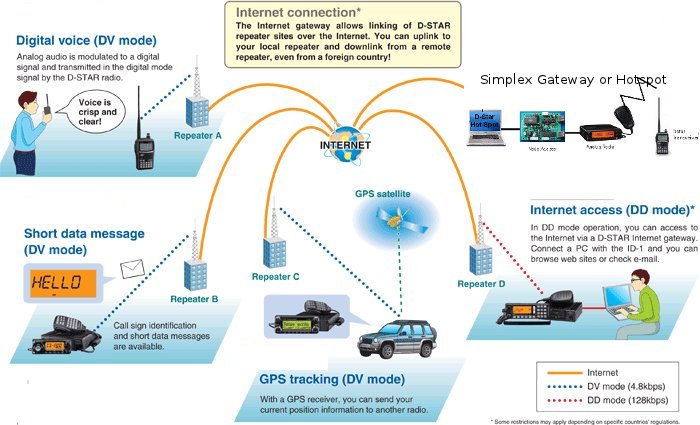D-STAR
The earliest innovation in amateur VHF/UHF digital communications is D-STAR (Digital Smart Technologies for Amateur Radio), a digital voice and data protocol developed as a result of research by the Japan Amateur Radio League to investigate digital technologies for amateur radio. The mark, ‘D-STAR’, is itself a registered trademark of Icom. Other non-digital modes such as amplitude modulation, frequency modulation, and single sideband have been widely used since the first half of the 20th century. By comparison, D-STAR signals offer clearer signals and use less bandwidth than their non-digital counterparts. The quality of the data received is better than an analog signal at the same strength. The system today is capable of linking VHF and UHF repeaters together locally and through the Internet utilizing callsigns for routing of traffic. With a simple VHF/UHF D-Star capable transceiver, one can talk to the world with crystal clear audio.
This is the reason why there are many home made D-Star solutions. There are four reflector systems used for communication, DCS (most common), D-Plus REF reflectors (mostly in English speaking countries), the x-Reflector system (which plays a minor role), and the latest creation XLX Reflectors.
When a DV Dongle is connected to a PC or Mac and used with DVTool software, an amateur radio operator can connect to the international D-Star gateway network and receive/transmit just like a D-Star radio user. The DV Dongle connects to your PC or Apple Mac via a USB port and provides encoding and decoding of compressed audio.
Before you can use D-Star, you have to register!
D-Star – https://regist.dstargateway.org/Dstar.do
Am I registered for D-Star?
D-Star – https://wb1gof.dstargateway.org/cgi-bin/dstar-regcheck
More information can be found here.


